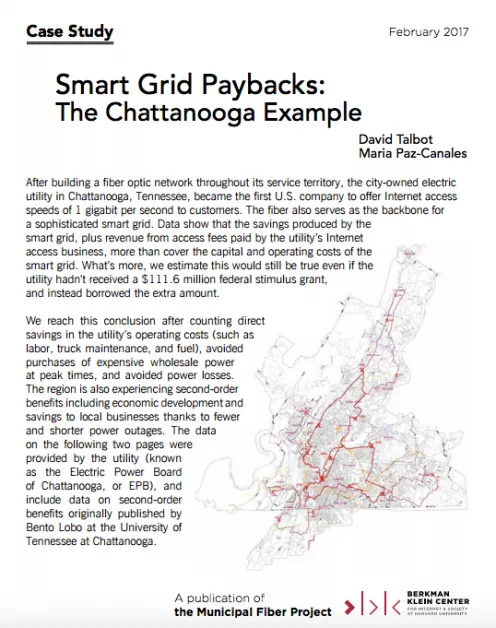
Smart Grid Paybacks: The Chattanooga Example
A case study by David Talbot and Maria Paz-Canales
After building a fiber optic network throughout its service territory, in 2010 the city-owned electric utility in Chattanooga, Tennessee, became the first U.S. company to offer fiber-to-the-home Internet access at speeds of 1 gigabit per second. The fiber also serves as the backbone of a sophisticated smart grid which modernized the utility’s electricity infrastructure. This report from the Municipal Fiber Initiative examines paybacks on the smart grid. Recent data from the utility, Electric Power Board (EPB) of Chattanooga, show that the savings produced by the smart grid, plus revenue from access fees paid by the utility’s Internet access business, more than cover the financing and operating costs of the smart grid, and would do so even if the utility hadn’t received a $111.6 million federal stimulus grant. (A companion report, Citizens Take Charge: Concord, Massachusetts Builds a Fiber Network, describes the earlier-stage municipal smart grid and fiber-to-the-home Internet access project in the town of Concord, Massachusetts.)

